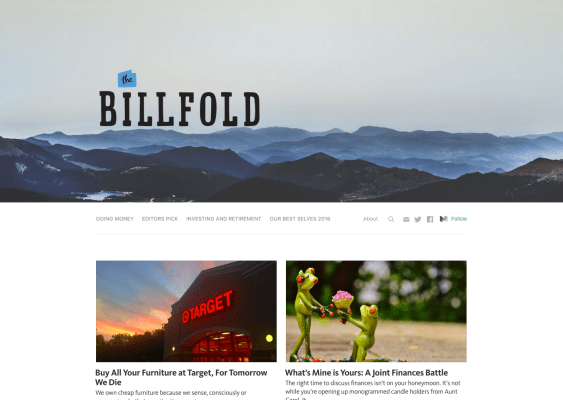Medium is releasing a new set of tools for publishers to convince them to drop their old content management systems. And it seems to be working as a few independent publishers are going all-in on Medium, such as The Awl, Pacific Standard, Electric Literature and others.
And in case you’re wondering how it’s going to look, many of these websites are already live on Medium. For instance, Pacific Standard now runs on Medium. At the top of the screen, you can see a Pacific Standard banner with a couple of tags below.
If you click on “News” or “Features” for instance, you can see all the latest posts in these categories in reverse chronological order. There’s also an about page listing all the people working for Pacific Standard as well as their Medium profiles. You can search or follow a publication on various social networks from this banner as well.
Below the header, a Medium-powered site features different collections of stories. I believe Pacific Standard is manually crafting this homepage by adding a story to one of these collections. When you click on an article, it looks like a Medium article except that there’s a Pacific Standard logo at the top that brings you to the publication’s homepage.
I browsed a few other Medium-powered websites and they all look the same. It’s not bad, but publishers lose a bit of personality when they move to Medium. They can’t pick a font, play with the layout or innovate on the product front. In other words, they’re outsourcing all the product part of their respective publications.
It’s good and bad at the same time because Medium has built a powerful social graph by making users autofollow people they already follow on other social networks, such as Twitter and Facebook. Millions of people are now receiving Medium newsletters with article recommendations based on this social graph.
Medium is also likely to adopt new web technologies more quickly compared to independent publishers. Medium supports Google AMP and Facebook Instant Articles for example.
And yet, by switching to Medium you create a massive dependence with Medium. You don’t have a say on the roadmap and you outsource advertising to Medium (Update: you can still independently sell and publish your own sponsored content on Medium). The startup will soon roll out promoted stories from Bose, SoFi, Nest, Intel, and Volpi Foods. These advertisers will pay to highlight their Medium stories below other Medium posts. If readers click on these promoted stories, publishers get a cut. Medium will also enable monthly subscriptions to access members-only content.
Existing publishers switching to Medium can import their old content and map existing URLs with Medium pages. Here’s the full list of publishers:
The Awl, Pacific Standard, Electric Literature, Franklin Leonard’s The Black List, Femsplain, FilmSchoolRejects, The Bold Italic, Monday Note, NewCo Shift, The Banana Boat (by The Infatuation), MEL, and Lorne Michaels’s Above Average and The Kicker.
Medium wants to host all sorts of text for everyone. The startup wants be the home of your personal blog, your corporate blog, your one-off article that you want to share on Twitter or Facebook, your presidential campaign, your indie publication and more. By doing this, we’re letting Medium control distribution of everyone’s content on the Internet. Signing with Medium is a risky bet, but it looks like the startup found a way to convince some of the most interesting indie publications.
